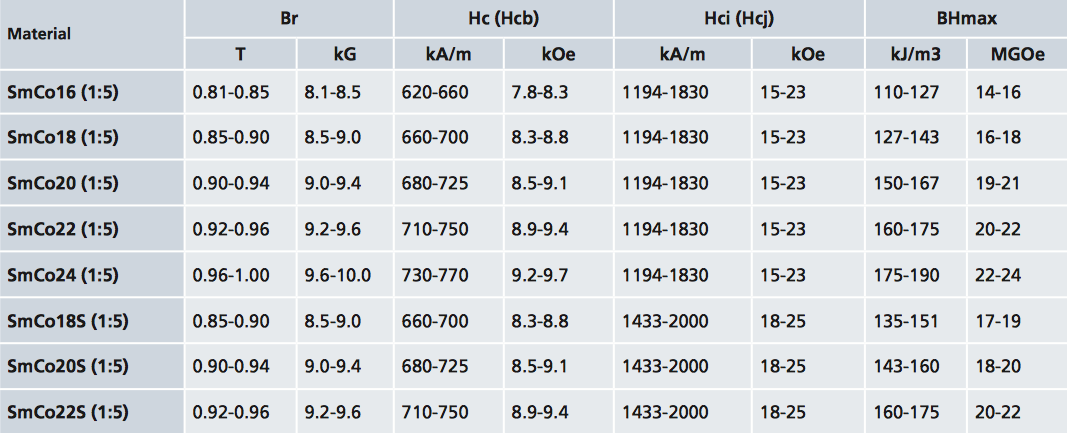Magnetic Jewelry Strength
Magnets come in a wide range of materials and strengths. Cobalt and Neodymium magnets are the two types used in magnetic jewelry. Samariun Cobalt magnets are used because they are rust resistant and maintain strength at high temperatures, but they are relatively low in strength as compared to Neodymium. Neodymium magnets can be charged with a much higher Gauss but rust easily and loose strength at high temperature. Most magnetic jewelry use neodymium magnets because the strength is needed due to the magnets being quite small (2mm thick by 3-5mm wide).
The Maximum Energy Product at the point on the B/H Curve that has the most strength, expressed in MGOe (MegaGaussOersteds). Sumarium Cobalt magnets have a MGOe of 14-24 and Neodymium magnets have a MGOe of 33-53. When describing the grade of a neodymium magnet, this number is commonly referred to as the "N" number, as in Grade N52 magnets. We only use grade N52 in our magnetic jewelry. It is the strongest magnet that can be manufactured. In the field of magnetic jewelry there are companies claiming there bracelets have 50 - 4000 gauss magnets so it is 200,000 gauss. It is absolutely impossible and laughable in the scientific community.
The therapeutic magnetic strength of magnetic jewelry is a function of Gauss (strength) plus the size and number of magnets. A cuff bracelet with 2 - 2000 gauss magnets is not nearly as therapeutic as a link bracelet with 36 - 5200 gauss magnets. A magnetic bracelet using 3000 gauss magnets with 20 - 3mm magnets is half the strength of a bracelet with 20 - 5mm magnets. A magnetic bracelet using 20 - 5mm 3000 gauss magnets that are 2 mm thick will be 25% stronger than the same bracelet with 1.5mm thick magnets. In magnetic jewelry we can count the number of magnets, measure the diameter of the magnet, and we know the grade of neodymium used but the thickness of the magnet in a piece of magnetic jewelry cannot be detected. Also some manufacturers may use a slightly lower grade than specified or may exaggerate actual strength.
The only way to know the actual overall strength of a piece of magnetic jewelry is by using a pull test. The pull test will account for all the variations in magnetic strength, size number and thickness. The pull test is performed by laying the magnetic bracelet on a piece of sheet metal and dragging the bracelet using a weight scale.
Sumarium Cobalt Magnet Chart

Neodymium Magnet Chart

